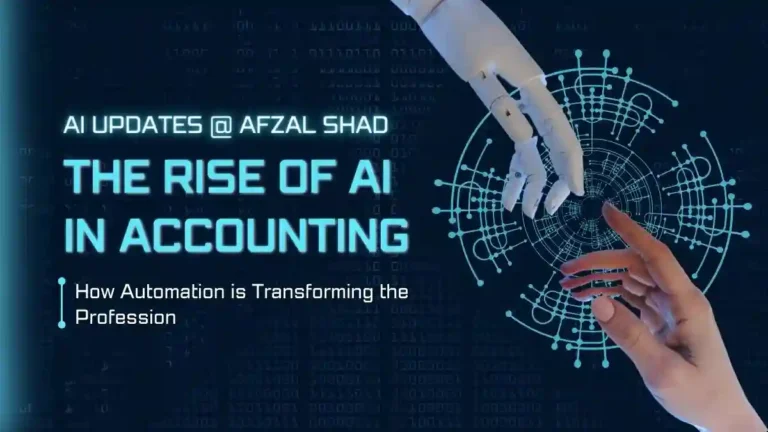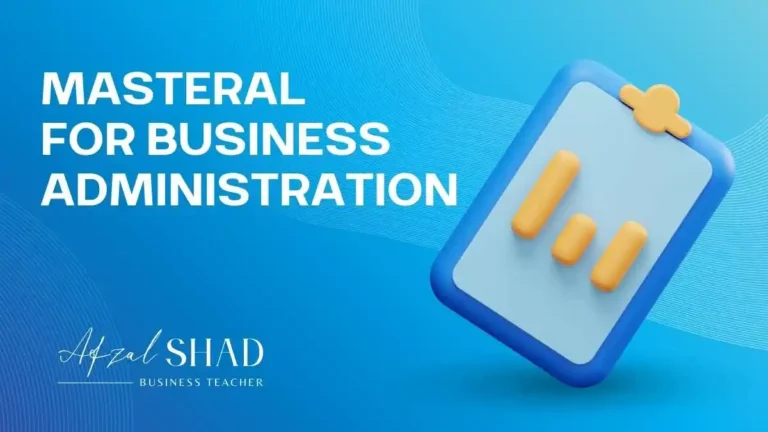Artificial Intelligence (AI) has emerged as a powerful tool that holds immense potential in transforming the field of education. By leveraging AI technologies, educators can enhance teaching and learning experiences, personalize instruction, and provide valuable insights into student performance. In this blog post, we will explore The Role of Artificial Intelligence in Education: Enhancing Teaching and Learning and how it contributes to improving the educational landscape.
Personalized Learning: Tailoring Education to Individual Needs
AI enables personalized learning by adapting educational content, pacing, and feedback to meet the specific needs and abilities of each student. Intelligent tutoring systems and adaptive learning platforms utilize AI algorithms to analyze student data and provide customized learning paths, ensuring students receive targeted instruction and support.
AI technologies, such as intelligent tutoring systems and adaptive learning platforms, utilize algorithms to analyze vast amounts of student data and create personalized learning paths. These systems assess students’ strengths, weaknesses, and progress, enabling them to receive targeted instruction and support.
AI-powered platforms can adapt the pace and complexity of learning materials based on students’ performance, ensuring that they are appropriately challenged and not overwhelmed. This individualized approach promotes deeper engagement, enhances comprehension, and fosters a sense of ownership over the learning process.
Intelligent tutoring systems provide immediate feedback, guiding students through their mistakes and helping them understand concepts more effectively. They can identify areas where students struggle and provide additional resources or practice opportunities to reinforce learning.
Intelligent Virtual Assistants: Enhancing Classroom Efficiency
The Role of Artificial Intelligence in Education in terms of Intelligent virtual assistants, powered by AI, can assist teachers in various administrative tasks, such as scheduling, grading, and organizing resources. These assistants can also provide quick answers to student queries, freeing up valuable time for teachers to focus on instructional activities.
- Intelligent virtual assistants, powered by AI, assist teachers in various administrative tasks, saving time and enhancing classroom efficiency.
- These virtual assistants can help with scheduling, organizing resources, and managing administrative workflows, allowing teachers to focus more on instructional activities.
- Intelligent virtual assistants can provide quick answers to student queries, reducing the need for immediate teacher intervention and promoting independent learning.
- By automating certain administrative tasks, virtual assistants streamline workflow processes, allowing teachers to allocate more time to planning and delivering engaging lessons.
- Virtual assistants can assist in grading objective assignments, such as multiple-choice quizzes, freeing up valuable time for teachers to provide more detailed feedback on subjective assignments.
- With the ability to store and retrieve information, virtual assistants can help with organizing and accessing educational resources, making it easier for teachers to find relevant materials for their lessons.
- These assistants can facilitate communication and collaboration within the classroom by coordinating group activities, managing discussions, or assigning tasks.
- Intelligent virtual assistants can also assist in generating progress reports and analytics, providing valuable insights into student performance and learning patterns.
- By enhancing classroom efficiency, virtual assistants contribute to a more streamlined and productive learning environment, allowing teachers to focus on facilitating meaningful learning experiences for their students.
- It is important to strike a balance between the use of virtual assistants and maintaining human interaction and guidance in the classroom, ensuring that the role of the teacher remains central to the educational experience.
Looking for Teachers / Online Tutor Jobs? – Visit Pakistan Teachers Club
Intelligent Assessment and Feedback: Timely and Detailed Evaluation
AI-based assessment tools offer efficient and accurate evaluation of student performance. Automated grading systems can assess objective assignments, saving time for teachers. AI can also provide detailed feedback to students, identifying strengths and areas for improvement, promoting self-directed learning and growth.
- AI-based assessment tools enable efficient and accurate evaluation of student performance, providing timely feedback.
- Automated grading systems can quickly assess objective assignments, such as multiple-choice questions or quizzes, saving teachers valuable time.
- AI algorithms analyze student responses, providing detailed feedback on areas of strengths and weaknesses, helping students understand their progress and areas for improvement.
- Intelligent assessment tools can offer immediate feedback to students, promoting self-directed learning and allowing them to address misconceptions or gaps in their understanding promptly.
- Adaptive assessments adapt the difficulty level based on students’ performance, ensuring they are appropriately challenged and receive targeted support.
- AI-powered assessment platforms can generate comprehensive analytics and reports, providing insights into student progress, learning patterns, and areas that need attention.
- With AI, assessments can include various formats, such as text, multimedia, or interactive elements, offering more engaging and diverse evaluation methods.
- Intelligent assessment tools can identify common errors or misconceptions, enabling teachers to adjust their instructional strategies and target specific areas of instruction.
- AI can facilitate formative assessments, allowing teachers to continuously monitor student learning and adjust their teaching methods in real-time.
- Detailed evaluation and feedback provided by AI-based assessment tools contribute to a more personalized and effective learning experience, supporting students’ growth and academic development.
Data Analytics: Insights for Informed Decision-Making
AI-driven data analytics enable educators to analyze vast amounts of student data, identifying patterns and trends that inform instructional strategies. By analyzing data on student progress, engagement, and learning preferences, educators can make data-informed decisions to optimize teaching methodologies. The Role of Artificial Intelligence in Education in terms of Data Analytics includes keypoints;
- Data analytics powered by AI allows educators to analyze vast amounts of student data to gain valuable insights.
- By examining patterns, trends, and correlations in the data, educators can make informed decisions about instructional strategies, curriculum development, and student interventions.
- Data analytics can help identify areas where students may be struggling, enabling targeted interventions and personalized support.
- Educators can track student progress and growth over time, identifying strengths and areas for improvement.
- AI-based data analytics provide a deeper understanding of student engagement, learning preferences, and behavior, helping to tailor instruction to individual needs.
- By analyzing data on student performance, educators can adjust teaching methods, content delivery, and pacing to optimize learning outcomes.
- Data analytics can assist in identifying gaps in the curriculum and areas where instructional adjustments may be necessary.
- Educators can use data analytics to monitor the effectiveness of interventions and educational initiatives, making data-driven decisions to improve outcomes.
- AI-powered data analytics facilitate the identification of trends and patterns at a larger scale, enabling educational institutions to make strategic decisions for the improvement of their programs and policies.
- By harnessing the power of data analytics, educators can gain actionable insights that support evidence-based decision-making, leading to more effective and targeted instruction for students.
Virtual Reality and Augmented Reality: Immersive Learning Experiences
AI-powered virtual reality (VR) and augmented reality (AR) technologies offer immersive and interactive learning experiences. Students can explore virtual environments, conduct simulations, and engage in hands-on learning, enhancing their understanding of complex concepts and fostering creativity.
- Virtual reality (VR) and augmented reality (AR) technologies offer immersive and interactive learning experiences.
- VR provides a simulated environment that allows students to experience realistic scenarios and explore concepts in a controlled, virtual space.
- AR overlays virtual elements onto the real world, enhancing the learning environment and providing additional information or visualizations.
- Immersive experiences in VR and AR engage multiple senses, fostering deeper understanding and retention of information.
- Students can participate in virtual simulations and interactive activities that replicate real-world scenarios, such as science experiments, historical reenactments, or virtual field trips.
- VR and AR enable hands-on learning experiences, allowing students to manipulate objects, dissect virtual models, or engage in virtual lab experiments.
- Visualizations and 3D models in VR and AR provide a more intuitive understanding of complex concepts, making abstract ideas more concrete and tangible.
- Collaborative VR and AR experiences enable students to work together in virtual environments, promoting teamwork, communication, and problem-solving skills.
- VR and AR can bridge geographical barriers, allowing students to connect and collaborate with peers from different locations, fostering global perspectives and cultural understanding.
- Immersive learning experiences through VR and AR spark curiosity, motivation, and active engagement, enhancing the overall learning process and promoting deeper knowledge acquisition widening The Role of Artificial Intelligence in Education
Useful Links: A Levels Business — IGCSE/O Level Business — IGCSE/O Level Accounting — Scholarships for Students — Online Jobs for Business Students
Intelligent Content Creation: Dynamic and Adaptive Resources
AI enables the creation of intelligent educational content that dynamically adapts to student needs. AI algorithms can generate personalized learning materials, interactive quizzes, and educational games, catering to diverse learning styles and ensuring engaging and effective content delivery.
- Intelligent content creation leverages AI to develop dynamic and adaptive educational resources.
- AI algorithms can generate personalized learning materials tailored to individual student needs, preferences, and learning styles.
- Intelligent content adapts in real-time based on student progress, providing appropriate challenges and support as they advance.
- AI-powered platforms can create interactive quizzes, simulations, and educational games that engage students and promote active learning.
- Intelligent content can incorporate multimedia elements such as videos, animations, and interactive graphics to enhance understanding and engagement.
- AI algorithms analyze student interactions with the content, enabling personalized recommendations and adaptive feedback.
- Intelligent content creation allows for scalability, as AI can generate a wide range of educational resources quickly and efficiently.
- By continually analyzing student data and feedback, intelligent content can evolve and improve over time, enhancing its effectiveness.
- Adaptive resources generated by AI ensure that students receive targeted instruction and support, catering to their unique learning needs.
- Intelligent content creation enhances the flexibility and responsiveness of educational resources, promoting individualized and effective learning experiences.






